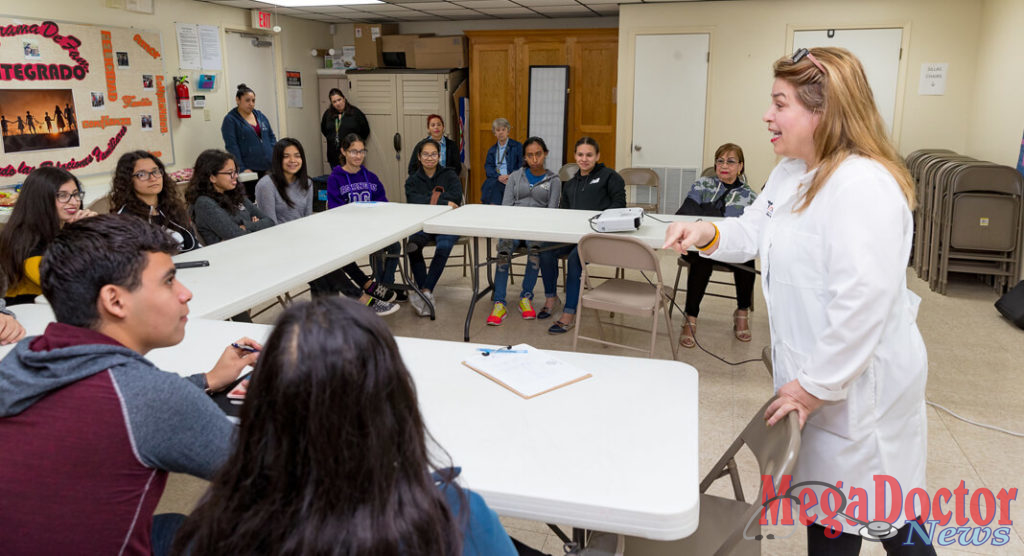University professor hoping program brings attention to brain health

Mega Doctor News
By Maria Elena Hernandez
Rio Grande Valley, Texas – Among the senior citizen visitors and vendors at a recent Winter Texan event in Alamo, a small group of high school students line-dancing looked a little out of place.
“We’re just thinking about the song ‘Copperhead Road’ for no reason. And so we’re doing the dance,” said Ashley Caldera, a student at South Texas Academy for Medical Professions.
Though it was a spur of the moment, the dance helped the students with their goal that day. They’re the Alzheimer’s Ambassadors, a group of high school students working with the Alzheimer´s Disease Resource Center for Minority Aging Research (AD-RCMAR) at The University of Texas Rio Grande Valley.
Alzheimer’s disease is a form of dementia that causes changes in memory, attention,
The impromptu dance not only helped students get attention but also let them share an easy way to stay active: Regular physical exercise is one activity that can help lower the risk of Alzheimer’s.
YOUTH: UNEXPECTED VOICES FOR AWARENESS
Dr. Gladys Maestre, a UTRGV professor of neuroscience and human genetics and director of the UTRGV Alzheimer’s Disease Resource Center for Minority Aging Research, said the center provides education, mentoring and support for the ambassadors, “so they can become the voice of people with Alzheimer’s and their caregivers.”
Alzheimer’s Ambassadors include students from The Science Academy of South Texas in Mercedes, South Texas Academy for Medical Professions in Olmito, and Saint Joseph Academy in Brownsville. The group’s youth and message are an unexpected combination.
“For the public, they get very surprised to have a young person being more knowledgeable than they are,” Maestre said.
Caldera said they are gaining knowledge and experience with each visit as ambassadors.
“We’re learning about neurology,” she said. “And we’re learning about patient care, which is very important in the health field.”
The ambassadors sometimes are asked what college they attend.
“They’re like, ‘Wow, you’re high school students,’” Caldera said.










